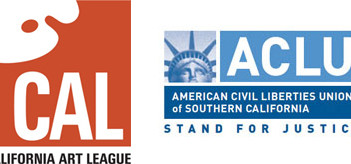
California Art League & ACLU-SoCal “Art In A Free Society”
CALL FOR ENTRIES – DEADLINE: Wednesday, January 27, 2016 RECEPTION & AWARDS PRESENTATION Saturday, February…

CALL FOR ENTRIES – DEADLINE: Wednesday, January 27, 2016 RECEPTION & AWARDS PRESENTATION Saturday, February…
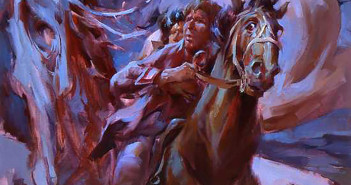
Music pervades the studio, the headset-phone rings from time to time, the brush proceeds. Here in the solitude of the easel-station there’s time to consider. I’m looking at hold-ups.
Did you ever stop to realize how drawing holds up brushwork? When work is prepared with a drawing, simple or complex, there’s the tendency to work around the lines and cave in to the drawing. This can be an effective way to go, of course, but for a lot of us drawing is a tyranny which impedes freshness and spontaneity. The virus of overwork easily eats away if there are lines to attend to.
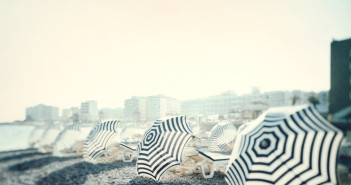
“If you’re alive, you’re a creative person,” writes Elizabeth Gilbert in her 2015 manual on creativity and fear, Big Magic. “Fear is always triggered by creativity, because creativity asks you to enter into realms of uncertain outcome.” She says it’s nothing to be ashamed of — creative living is always possible — we need only embrace the magic that often comes after diving into the unknown. Also, we must practice.
There once was a director of a small, high-risk enterprise — a start-up dependent on the quality of its team — who one day telephoned each of his employees and invited them to choose a passion…
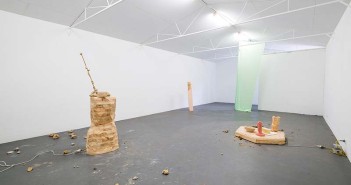
In most American cities, just a few blocks beyond the twinkle of Gallery Row, you may find an area that portrays a sobering swatch of American life: sleeping bags, shooting galleries, shopping carts filled with the discards of fuller days. Residential hotels replace the fast-fashion teenager meccas. Here, you may spot an art world cutting-edger — a dreamer in search of a better price-per-square-foot and a freshly painted box, ripe for the evangelizing of contemporary art.
On an impromptu Saturday, I tiptoed over a sidewalk of hypodermic needles and got buzzed in
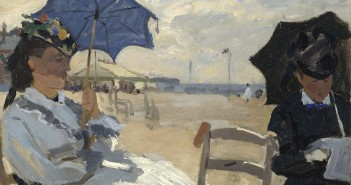
I may be totally wrong on this one. I’m thinking that artists are among those who don’t really want to receive too many gifts for the Holiday Season. It may have something to do with the overabundance of joy in our daily lives — or the consequent guilt that arises, but we artists, by and large, are not into materialism. At this time of year there is little that we might covet. Actually, this year the only thing that I want is one of those radio-controlled tarantulas
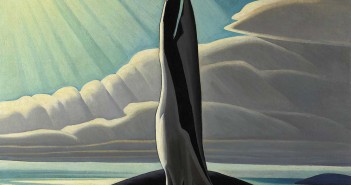
When I was growing up, my Dad told me stories about walking with his friend and mentor in the forests near Vancouver. It was the 1960s and Lawren Harris (1885–1970) was deep into his last period of pure abstraction, inspired by theosophy and transcendentalism. Germs of remembrance and philosophy have since filtered through Dad’s studio and eventually onto my own easel as assumed knowledge. It seems there was never a time I didn’t believe that paintings come out of themselves — serving as springboards for the next and the next — gaining power as they appear
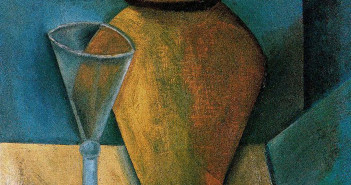
Several times I’ve been back to a place in southern France — an old farm-home converted into self-contained suites. Mas Peychonnier, with a commanding view and under the eye of a mysterious Cathar castle, presides over its grapefields.
At first I didn’t find much of interest. I rambled the area on foot, drove my Alfa here and there on the tiny, wandering roads. The highlands around are barren, windswept. Villages of stone and masonry as well as severe, compact farms are scattered in the valley grapelands.
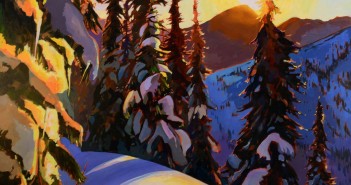
While giving a workshop at Hollyhock a few summers ago, a painter stood out to me as a maker of bold strokes. Her brush flicked here and there over a cadmium ground, laying in tree and driftwood shapes and casually daubing at counterpoints. Steady in pace and intent, her completed work built up around her like a thickening forest.
The following spring, I got an email: “I’ve sold a big one. I’m going to use the money to join you in the Bugaboos.”
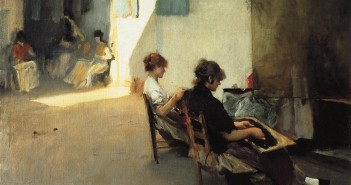
It’s often been said that writing is re-writing. Why then cannot painting be repainting? Because, for some silly reason — like a concert pianist’s reason — we have a need to get it right. When you think about it, a painter has permission to keep reworking a painting until she sees what she wants to see. Lines may be found by many passes. Colours by many swatchings.
Did you ever stop to realize that only the originating artist (and perhaps a black light) knows how bad or how different it is under there
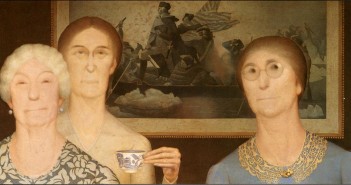
I’m wandering in a magic farm called “Serendipity,” a place of fragrant gardens, hencoops, sheepfolds, shady arbors, scarecrows and a hee-hawing donkey. There’s fifty painters scattered in nooks and crannies, and I’m looking over shoulders. As I see it, everybody’s trying to make something a bit unique. This is not a body of workmen following a blueprint and constructing a unified monument. Everybody’s doing his or her own thing. Everybody here is a specialist